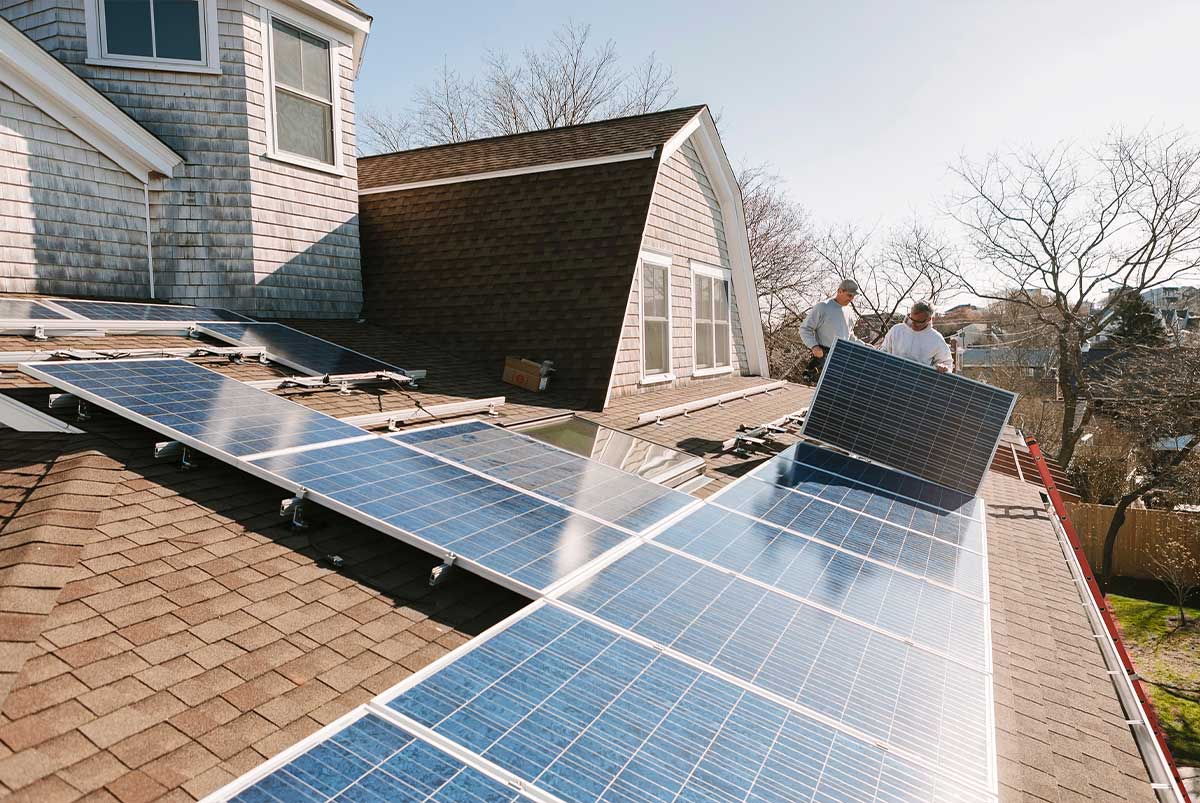Ready To Buy a Home?
Get Approved to Buy a Home
Rocket Mortgage® lets you get to house hunting sooner.
Whether you’re worried about your carbon footprint or trying to save on utility bills, there are many benefits to considering an energy-efficient mortgage (EEM). EEMs, also known as green mortgages, are loans that can be used to finance energy-efficient improvements to an existing home or purchase a home that’s already energy efficient.
We’ll cover EEM requirements, the type of upgrades that are covered and the pros and cons, so you can decide if this mortgage option is right for you.
The Short Version
- Energy-efficient mortgages (EEMs) are loans used to finance energy-efficient improvements to an existing home or purchase one that’s already energy efficient
- EEM options exist for conventional, VA and FHA loans. You’ll need to meet the initial loan requirements and have a licensed consultant create an energy report for the home
- Energy-efficient appliances, heating and cooling systems, insulation and solar panels are examples of the types of upgrades that are covered with an EEM
Why Choose an Energy-Efficient Mortgage?
The greatest benefit of EEMs is that they provide access to additional funds. For example, if you wanted to replace your HVAC system or make other structural improvements that would be considered energy-saving, securing an EEM would allow you to finance these improvements.
You can refinance your current mortgage to an EEM to make energy-saving repairs to your current home. You could also secure funds from an EEM to make energy-efficient upgrades to a new home or spend more on a home that’s already considered green.
Essentially, the EEM program gives you higher borrowing limits in exchange for a more sustainable home. Everybody wins.
Energy-Efficient Mortgage Requirements
EEMs are available with conventional loans, Federal Housing Administration (FHA) loans and Veterans Affairs (VA) loans. The first step to qualify for an EEM is meeting the base loan requirements for the loan type you’re applying for. This involves several factors, including your credit score, debt-to-income (DTI) ratio, and down payment.
If you need a refresher, you can read more about these loans and their specific requirements below. We’ll also explain more about each EEM-specific option in the next section.
Meeting the initial loan requirements is just the first step. Next, you’ll need to obtain an energy assessment. During this process, a licensed energy consultant will examine your home and create a Department of Energy (DOE) home score energy report, a home energy rating system (HERS) report or another similar assessment.
The purpose of this assessment is to quantify the potential improvements you’re looking to make, how much they’ll cost and how much they could save you. To qualify for an EEM, the improvements you want should be considered “cost-effective.” Improvements are cost-effective when they save the homeowner as much as, or more than, the cost of the improvements.[1]
Types of Energy-Efficient Mortgages
Here are some additional details about the different EEMs available to home buyers.
FHA loan EEM
With the EEM program, the FHA insures the borrower’s mortgage. Borrowers only need to qualify for the loan amount that’s used to buy or refinance the home – and not the portion of the loan that’ll be used to cover the energy-related upgrades.
The maximum value of any energy-efficient improvements that can go toward the loan are:[3]
- The cost of potential energy-efficient improvements (based on a home energy assessment)
- Or the lesser of 5% of:
- The adjusted value
- 115% of the median area price for a single-family home
- 150% of the national conforming mortgage limit
VA loan EEM
The VA offers EEMs for qualified military personnel, reservists and veterans. In other words, if you haven’t served in the military in some capacity, you won’t be eligible for this loan.
The value of any energy improvements that can be added to the loan is capped at $6,000. However, you can increase that loan amount if you support the extra costs with an increased valuation in an equal amount.[4]
Conventional loan EEM
If you’re considering an EEM, securing a conventional loan will likely give you the most borrowing power.
With a conventional loan EEM, you can secure up to 15% of the home’s appraised value for energy-efficient repairs.[5] For a $300,000 home, that would come out to $45,000.
Upgrades Covered by Energy-Efficient Mortgages
Remember, the funds from an EEM must be used for energy-efficient upgrades. So you won’t be able to use them for fixing unrelated problems or cosmetic issues with your home.
Below are examples of the types of upgrades you can finance with an EEM:
- Energy-efficient appliances (refrigerator, dishwasher, washer and dryer, etc.)
- Energy-efficient doors and windows
- Heating and cooling systems
- Caulking and weather stripping
- Insulation
- Solar panels
- Select roof improvements
- Weatherization treatments
Pros and Cons of Energy-Efficient Mortgages
We’ve put together a list of the benefits and drawbacks of EEMs, so that you can make the right decision for your situation.
PROS of an Energy-Efficient Mortgage👍
Qualifying for an EEM can unlock additional funds, allowing you to make improvements or purchase a home you otherwise might not have been able to.
Energy-efficient upgrades usually have a positive impact on the appraisal value of your home, especially over the long term.
By spending less on utilities each month, the money you save can eventually surpass what you spent on the upgrades to begin with.
CONS of an Energy-Efficient Mortgage👎
You’ll need to have an energy consultant examine your home and create a report. You’ll also need to pay for this assessment. Although, it may be possible to finance it with your loan.
You don’t have unlimited time to make these upgrades. Usually, you’ll have between 3 and 6 months to complete the repairs. If they aren’t completed in time, you’ll have to apply the funds you received to a prepayment of the mortgage principal.[6]
Upgrades must both be energy efficient and cost effective. So if you’re looking to do a lot of renovations, including kitchens and bathrooms, it’s likely many of the upgrades won’t qualify.
Make Your House Hunt More Efficient
EEMs can be a great tool for improving the energy efficiency of your home, saving you money in utilities and increasing the value of your home long-term.Regardless of the type of EEM you might be interested in, the first step will be qualifying for the initial loan. Getting a mortgage preapproval can give you a leg up when it comes to finding a house within your budget and submitting offers.




